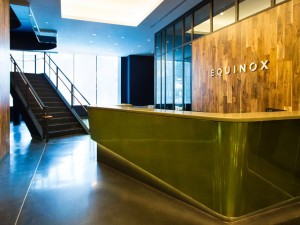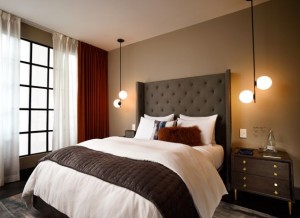How to Boldy Go Where Your Brand has Not Gone Before
As consumers, we are used to certain consistencies. We get used to the way things are, a feeling that extends to our interactions and connections with brands. We have come to expect that certain brands will exist in certain areas – that Coca-Cola will be a in the soda aisle at the grocery store, and that if we want to buy a new computer, we head to the electronics store.
But what happens when the comfort zone is compromised, when brands begin to enter an industry previously untouched by their branding efforts?
In a recent article, author Liam La Guerre discussed a number of new “lifestyle hotels” that were opening in the near future, backed by some unexpected brands.
For instance, fitness brand Equinox is planning to opening 50 new brand-centric hotels around the world, starting with the flagship hotel in New York City, complete with a 60,000-square-foot Equinox fitness center within the hotel footprint.
Additionally, a number of furniture brands are also opening branded hotel locations, which will seemingly double as showrooms for their products, allowing guests to really expand the ability to “test drive” the furniture featured in their rooms.
Hotels aren’t the only examples of brands breaking the consumer comfort zone mold – brand extension has been a brand strategy for years, teaming brands together to expand their footprint and introduce themselves to a new audience. From Hermes entering the Apple Watch accessory space to Harley releasing branded cake decoration kits, brands have long looked for these opportunities.
The big question facing all of these is how far their original brand can carry the new extension – especially when the efforts are starting from scratch when it comes to brand recognition and equity in the new space.
In doing so, these brands should adopt a hybrid brand strategy, where their mindset is part start up and part brand loyalty-focused, an admittedly unique situation. The Equinox hotel, for instance, is a startup in the hotel industry, faced with the challenges that come with that status, such as building reputation and trust among both consumers and the industry as a whole. To counter, they have made the decision to not just use the hotel as an extension of their portfolio, but an extension of the Equinox brand itself.
This is a brand with loyal and reliable consumers, who not only flock to the fitness centers because of the services they offer, but because they have an emotional connection with the brand itself. They value fitness, which the hotel is putting front and center, and they value the Equinox commitment to a lifestyle similar to theirs. The hope, when they stay at one of these hotels, is that this lifestyle and connection will extend to beyond their time working out, but to their whole stay.
To brands looking to find new areas in which they can establish a presence – find your unique. Find how your brand makes consumers feel, experience, think, etc. – whatever makes you stand out. Then the key to a successful new brand entry – you must convince your consumers and potential consumers that what they are getting in the new offering will evoke the same feelings and connections as the branding it carries, which they couldn’t find anywhere else.
That is how you can break the mold, using the unique to bridge the gap between your brand and your new offering.
Has your company recently experienced change or growth? Due to changes in business strategies, acquisitions, internal organizational changes or the addition of new products to a portfolio, your brand strategy may need to evolve over time. Click here to download your free copy of “Your Brand’s Guide to Corporate Change” today, and learn how to align your brand and business strategy for success!
